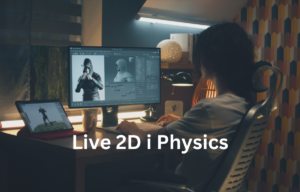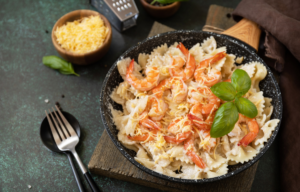Larry the Lobster Glow Affect Art captures the vibrant essence of marine life by enhancing the character with neon and luminescent highlights. This artistic style emphasizes bright outer glows and subtle shadows, creating a dynamic visual effect that makes the character appear radiant and lively. Through proper use of lighting layers and contrasting colors, this art style brings a playful, glowing energy to Larry’s persona.
In digital glow art, applying blending modes and effects like “outer glow” enriches the character’s outline, adding depth and dimension. Glow affect art works best with contrasting tones, ensuring vibrant elements pop while maintaining clarity. Techniques like gradient overlays and soft brushes further emphasize light intensity, giving Larry a distinct, glowing look.
Larry the Lobster Glow Affect Art Effect Techniques for Cartoon Characters
Creating glowing effects in cartoon characters involves layering bright colors strategically to simulate light emission. Artists often use soft brushes to apply highlights around key areas, such as edges or eyes, enhancing the character’s vibrancy. Adjusting opacity and blending modes ensures the glow blends smoothly with the surrounding elements.
Balancing contrast is essential to make the glow stand out without overwhelming the design. Combining multiple layers with varying levels of brightness adds depth and richness to the effect. Using gradient tools or subtle blur effects can also amplify the glow, making the character appear dynamic and visually engaging.
How to Create Neon Art Styles for Sea Creatures
Designing vibrant marine-themed artwork begins by selecting bold, high-contrast colors that mimic underwater bioluminescence. Layering bright hues along the edges of sea creatures enhances the glow, creating a lively and radiant effect. Soft brushes and gradient tools help to blend the colors smoothly, ensuring the glow appears natural and fluid.
Shadows and highlights play a crucial role in adding dimension, giving the artwork a sense of depth. Adjusting the opacity of each layer allows the bright elements to shine without overpowering the design. Fine-tuning brightness and contrast ensures that the illuminated areas pop, giving the sea creatures an eye-catching and dynamic appearance.
Glow and Shadow Layering in Digital Art
In digital illustration, balancing light and dark elements begins by layering highlights to emphasize key areas. Using soft brushes with reduced opacity helps blend light smoothly into the base colors, giving the artwork depth. Shadow placement is equally important, grounding the design and enhancing the perception of three-dimensionality.
Building multiple light and dark layers creates richer textures and more vibrant visuals. Artists often experiment with blending modes to ensure the interplay between light and shadow feels seamless. Fine adjustments to opacity and contrast enhance the overall atmosphere, ensuring both bright and shaded areas work harmoniously.
Examples of Luminescent Marine Life Art
Larry the Lobster Glow Affect Art inspired by glowing ocean life often features creatures like jellyfish, anglerfish, and coral, emphasizing their natural radiance. These pieces highlight the use of vibrant colors along tentacles or fins, mimicking the soft shimmer found in deep-sea environments. Artists also explore light patterns, creating effects that appear to pulse or flow, mirroring real marine bioluminescence.
In many artworks, contrasting dark backgrounds with luminous creatures enhances the glow effect, making the subjects stand out vividly. Some pieces incorporate layered lighting techniques to simulate depth, giving viewers the sensation of looking into an underwater scene. Combining subtle gradients and intricate patterns captures the delicate nature of these glowing creatures.
Glow-in-the-Dark Animation Concepts
Animating light effects involves synchronizing glowing elements with movement to create fluid, dynamic visuals. By applying keyframes to the brightness and opacity of highlighted areas, the animation gives the illusion of light flickering or shifting. Layered animations with gradual transitions ensure the glow feels organic and immersive.
Using contrasting backgrounds enhances visibility, making illuminated objects stand out more effectively. Animators often apply blur effects to create a soft radiance, adding depth to the glowing elements. Adjusting timing and easing functions allows the light to pulse naturally, evoking a captivating and lifelike effect.
Applying Outer Glow to Cartoon Characters in Photoshop
Adding light effects in Photoshop starts by selecting the layer with the character and applying a blending option to enhance the edges. Adjusting the size and spread of the glow creates a softer or more intense outline, depending on the desired effect. Modifying the opacity ensures the effect complements the character without overpowering the original design.
Choosing vibrant colors for the light effect helps emphasize specific areas, like eyes or accessories, to draw attention. Using multiple layers with varying glow intensities adds depth and dimension to the character. Fine-tuning these settings allows artists to achieve a polished look that enhances the character’s overall appeal.
Applying outer Larry the Lobster Glow Affect Art to cartoon characters in Photoshop enhances their visual appeal by adding depth and vibrancy. By carefully adjusting glow settings like size, spread, and opacity, artists create captivating effects that highlight key features. This technique elevates the character’s presence, making it stand out with a polished, dynamic finish.
Read more at our website.












